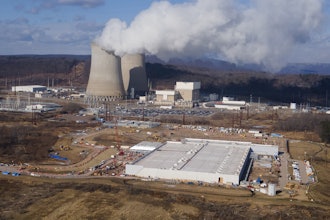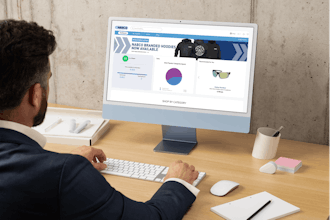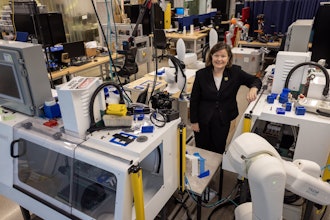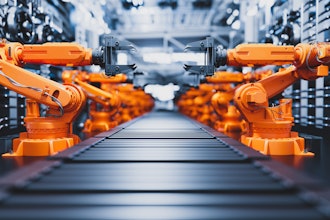
NEW YORK (AP) — Artificial intelligence is just about everywhere you look these days — including the workplace.
That means training staff about the technology and using it responsibly is critical. It's a tall order, especially as the commercialization of generative AI continues its rapid growth. Now some tech players have kickstarted initiatives in hopes of meeting that need.
Christy Pambianchi, chief people officer at Intel, recently spoke with The Associated Press about how the semiconductor chip maker is expanding AI education programming beyond the company's walls — as well as best practices around implementing AI in a workforce from an HR perspective. The conversation has been edited for clarity and length.
Q: How have conversations about AI in the workforce evolved since you joined Intel in August, 2021?
A: Intel's products are part of the AI innovation cycle that's happening on a continuum. But this technology is also transforming the world of work — so it's neat to contemplate both.
I think AI became a much bigger part of the conversation around the workforce, particularly generative AI, starting about a year ago. The HR community and many large companies have engaged in the AI continuum over the last number of years, but the acceleration right now can be seen in the growing adoption rates of people who have experimented with or used generative AI tools.
Q: What steps is Intel taking to help educate workers about AI?
A: We pay a lot of attention to the education space — through programs focused on equipping current and future workforce participants with the appropriate skills to use AI technology both impactfully and responsibly.
In our "Digital Readiness" program, we're collaborating in over 28 countries with more than 100 public-private partnerships to bring AI awareness programing around the world. We've also developed something called "AI for Workforce" — where we try to deliver content and also job readiness.
Q: Tell me more about the 'AI for Workforce' initiative.
A: Intel has created over 500 hours of free AI content for community colleges across the U.S. — which can then be added to an existing curriculum or used to help develop new certifications.
Maricopa County Community College District, for example, worked with us to launch a two-year AI Associate degree program. And these things can then be brought to the employment community as valid credentials for hiring talent.
Q: How can the industry break down access barriers to this kind of technology?
A: Some of what we try to do with these programs is lower the barrier of entry to AI. We try really hard to create content and programs that meet people where they're at — and help drive them to try this technology.
Scaling content to community colleges, which we know is the main access point for post-secondary education in the United States, is key to our "AI for Workforce" program. And 40% of schools participating in this initiative are designated Minority-Serving institutions.
Q: How can workplaces utilize what AI has to offer while keeping safety and ethical concerns about this technology in mind?
A: Any technology has to be implemented responsibly, and AI is no different.
At Intel, we've published a set of principles for the responsible use of AI — and there's been similar initiatives in the HR community across industries. I think one underlying premise that has to pull through is: Human at the center. AI and generative AI can augment work, but humans should be the decision makers.
The first thing is to be transparent with your employees and engage them in the process. It's important to reach out to your employee base for ideas on how AI can drive greater outcomes in their jobs — and leverage those voices while applying this technology to advance the wider goals of the company.






















